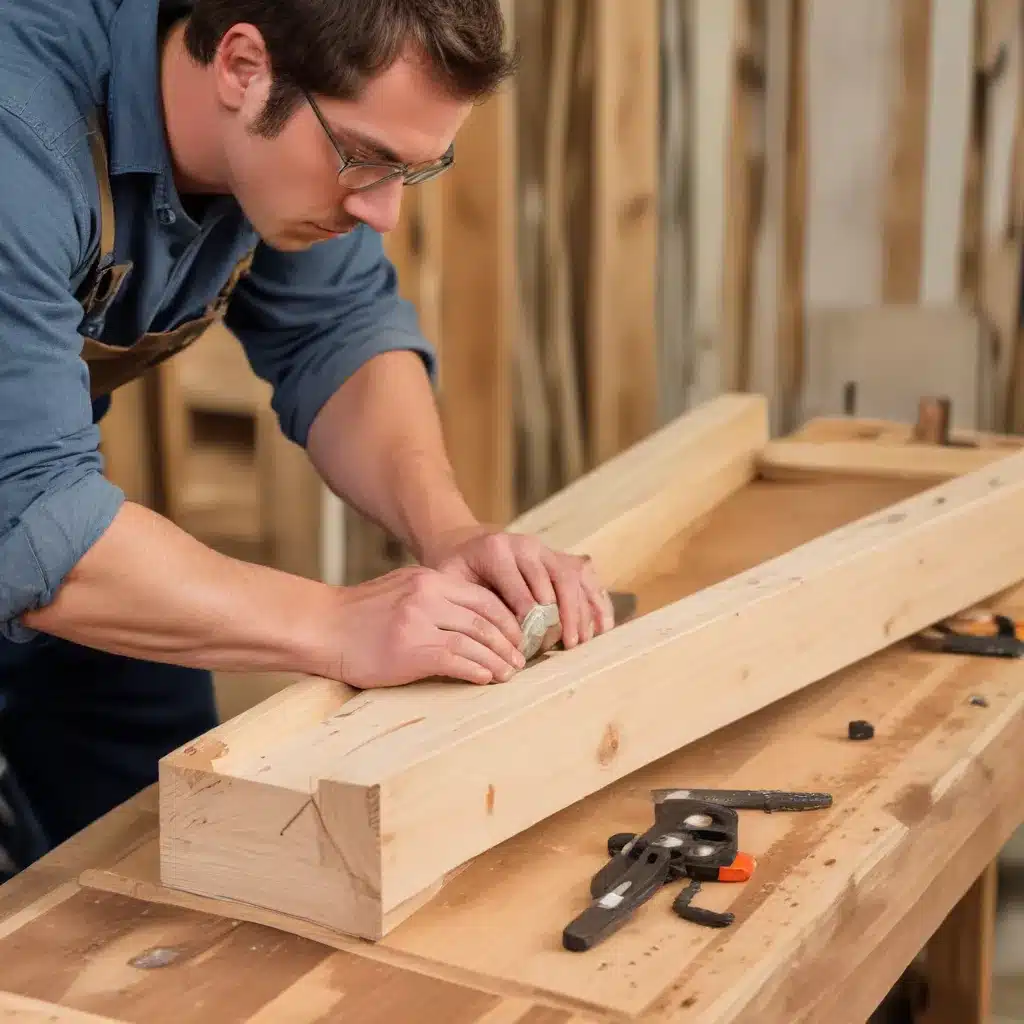
As an experienced woodworker and craftsman, I’ve learned that practicing proper safety is the foundation for a rewarding and fulfilling woodworking journey. Whether you’re just starting out or have years of experience under your belt, prioritizing safety should always be your top priority. In this comprehensive guide, I’ll share my insights and strategies for ensuring a safe and enjoyable woodworking experience, from the workshop to the workbench.
Establishing a Safe Workspace
One of the first and most critical steps in woodworking safety is creating a well-organized and well-equipped workspace. Your workshop or studio should be clean, well-lit, and free from clutter. Ensure that all tools and equipment are properly stored and easily accessible when needed. Invest in quality personal protective equipment (PPE) such as safety glasses, hearing protection, and a sturdy pair of work boots. These simple steps can go a long way in preventing accidents and injuries.
Proper Tool Maintenance and Storage
As a seasoned woodworker, I cannot stress enough the importance of maintaining your tools in top condition. Dull, damaged, or poorly maintained tools can be a recipe for disaster. Regularly sharpen your chisels, planes, and other cutting tools to ensure they’re performing at their best. Store your tools in a safe, organized manner, with sharp edges and blades properly protected.
Creating a Clutter-Free Workspace
A cluttered workspace can be a significant safety hazard. Take the time to keep your workshop tidy and organized. Designate specific areas for tool storage, workpieces, and project materials. Ensure that all walkways and work surfaces are clear of obstructions to minimize the risk of tripping or falling. By maintaining a clean and organized workspace, you’ll be able to work more efficiently and safely.
Mastering Lathe Safety
The lathe is a powerful and versatile tool that can be a great asset in any woodworker’s arsenal. However, it also presents unique safety challenges that must be addressed. Whether you’re turning bowls, spindles, or other projects, following proper lathe safety protocols is crucial.
Securing the Workpiece
One of the most critical aspects of lathe safety is ensuring that the workpiece is securely mounted. Take the time to properly secure the wood to the faceplate or chuck, using the appropriate techniques for the project at hand. Avoid taking overly aggressive cuts, as this can cause the workpiece to become dislodged and become a dangerous projectile.
Protective Gear and Tool Handling
When operating a lathe, it’s essential to wear a full-face shield to protect your eyes and face from flying debris. Avoid wearing loose clothing or jewelry that could become entangled in the spinning workpiece. Maintain a firm, balanced stance and keep your hands and fingers clear of the cutting edges. Develop a smooth, controlled technique when using your turning tools to minimize the risk of catches and kickbacks.
Lathe Speed and Vibration Management
The speed at which your lathe operates can have a significant impact on safety. Start at a slower speed and gradually increase the RPMs as you become more comfortable with the tool and the workpiece. Monitor the lathe for any excessive vibration, as this can be a sign of an imbalance or other issue that needs to be addressed.
Integrating Hand Tool Safety
While power tools often grab the spotlight when it comes to woodworking safety, hand tools also require careful attention. From chisels and planes to saws and hammers, each hand tool has its own unique set of safety considerations.
Proper Chisel and Plane Technique
When using chisels and planes, maintain a firm grip and keep your fingers clear of the cutting edges. Avoid using excessive force, as this can cause the tool to slip or bind, potentially leading to injury. Ensure that your workpiece is securely clamped or held in place to prevent unexpected movement.
Saw Safety Essentials
Whether you’re using a hand saw, jigsaw, or circular saw, always keep your fingers well away from the blade and maintain control of the tool at all times. Ensure that your workpiece is properly supported and that the saw’s guard is functioning correctly. Consider investing in a sturdy saw bench or miter saw stand to enhance stability and safety.
Hammer Techniques and Precautions
When driving nails or using a hammer for other tasks, be mindful of your hand positioning to avoid accidentally striking your fingers. Keep your eyes on the target and maintain a secure grip on the hammer’s handle. Be cautious of any splitting or splintering wood that could result from the impact.
Dust Management and Respiratory Protection
Woodworking can generate a significant amount of dust, which can be hazardous to your health if not properly managed. Invest in a high-quality dust collection system, such as a shop vacuum or stationary dust collector, and use it consistently. Additionally, wear a properly fitted respirator or dust mask to protect your lungs from fine particulates.
Embracing a Safety-First Mindset
Ultimately, the key to safe and successful woodworking is cultivating a safety-first mindset. Approach each task with caution, focus, and a willingness to take the necessary precautions. Stay alert, be mindful of your surroundings, and never take shortcuts when it comes to safety.
Regularly review safety protocols, stay up-to-date with industry best practices, and don’t be afraid to seek guidance from more experienced woodworkers. By prioritizing safety, you’ll not only protect yourself but also ensure that you can continue to enjoy the craft for years to come.
Remember, safety is not just a box to check; it’s a way of life in the world of woodworking. Embrace it, and you’ll be well on your way to creating beautiful and lasting projects with confidence and peace of mind.
If you’re looking to expand your woodworking skills and explore new projects, be sure to visit https://woodcraftparts.net/. Our website offers a wealth of resources, including tutorials, project ideas, and high-quality woodworking supplies to help you take your craft to the next level.